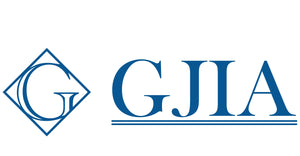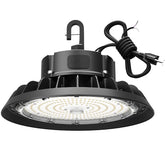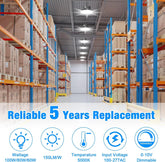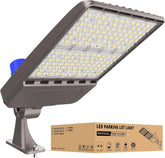A Complete Guide to LED Warehouse Lighting
The Current State of Warehouse Lighting
1.Energy Costs and Productivity
Energy costs are a significant concern for warehouse operations. In fact, lighting can account for up to 30% of a warehouse's total energy consumption. High energy bills can eat into profit margins, making it crucial for warehouse managers to find cost - effective lighting solutions. Poor lighting, on the other hand, has a direct impact on productivity. Dimly lit areas can slow down workers as they struggle to locate items accurately. A study shows that in warehouses with sub - standard lighting, workers may take up to 20% more time to complete tasks compared to well - lit facilities. Moreover, eye strain and fatigue caused by inadequate lighting can lead to more mistakes and a higher rate of workplace injuries, further hampering productivity.
2.Traditional Lighting Challenges
Traditional lighting options in warehouses, such as fluorescent and high - intensity discharge (HID) lamps, come with a host of challenges. Fluorescent lights have a relatively short lifespan, typically around 10,000 - 20,000 hours. This means frequent replacements, which not only incur the cost of new bulbs but also the labor cost for installation. HID lamps, while providing high levels of illumination, are extremely energy - inefficient. They can consume up to 50% more energy than more modern alternatives. Additionally, traditional lighting often requires regular maintenance to keep it functioning properly. Ballasts in fluorescent lights can fail, and HID lamps may experience color shift over time, both of which can lead to inconsistent lighting quality in the warehouse.
Why Choose LED Warehouse Lighting?
1.Energy Efficiency
LED warehouse lighting stands out for its remarkable energy efficiency. Unlike traditional lighting options such as fluorescent and HID lamps, LEDs convert a significantly higher percentage of electrical energy into light. Fluorescent lights can waste a large amount of energy as heat, while HID lamps are also notoriously inefficient. In contrast, LED lights can achieve energy savings of up to 70% compared to traditional lighting. For example, a 100 - watt LED fixture can provide the same amount of light as a 300 - watt HID lamp. These savings translate directly into lower energy bills for warehouse owners, allowing them to allocate resources to other critical areas of the business. With the rising cost of electricity, the energy - saving feature of LED lighting makes it an attractive long - term investment.
2.Long Lifespan
One of the most compelling reasons to choose LED warehouse lighting is its long lifespan. LED fixtures can last up to 50,000 - 100,000 hours, far exceeding the 10,000 - 20,000 hours of fluorescent lights and the relatively shorter lifespan of HID lamps. This extended lifespan means fewer replacements over time. For a large - scale warehouse, the cost of constantly purchasing new bulbs and paying for installation labor can be substantial. By using LED lighting, warehouse managers can significantly reduce maintenance costs and the frequency of disruptions caused by lamp replacements. Workers can focus on their tasks without the annoyance of frequent lighting outages, leading to a more efficient and productive work environment.
3.Improved Lighting Quality
LED lighting offers superior lighting quality that has a positive impact on warehouse operations. LEDs typically have a high CRI, often above 80, which means they can accurately render colors. In a warehouse setting, this is crucial for tasks such as inventory management, where workers need to distinguish between different products and labels. Additionally, LED lights provide more uniform illumination. They can be designed to distribute light evenly across large areas, eliminating dark spots and shadows. This uniform lighting reduces eye strain for workers, allowing them to work more comfortably and accurately. As a result, the risk of errors in picking, packing, and other warehouse tasks is minimized, leading to improved overall productivity and a safer work environment.
Types of Light Fixtures for Warehouses
1.High Bay Warehouse Lighting
High bay warehouse lighting fixtures are specifically designed for large - scale warehouses with high ceilings, typically ranging from 20 to 45 feet. These fixtures are characterized by their high - intensity illumination, which can effectively light up vast areas. One of the key advantages is their ability to provide uniform lighting across the entire space, reducing shadows and dark spots.
In terms of power, high bay LED fixtures come in various specifications. For smaller warehouses or areas with less demanding lighting requirements, 100 - 200 watt fixtures can be sufficient. They offer a good balance between energy consumption and illumination. For larger warehouses or areas that need intense lighting, such as loading docks, fixtures with 300 - 500 watts are more appropriate.
The high - bay design allows for efficient light distribution. They are often used in warehouses where forklifts operate, as the bright and even lighting helps operators navigate safely. Additionally, in areas where inventory is stored on high shelves, high bay lighting ensures that workers can easily locate and access items. The long - lasting nature of LED high bay lights also means less frequent maintenance, which is a significant advantage in large - scale warehouse operations.
2.Linear LED Lights
Linear LED lights are a popular choice for warehouses due to their versatility. In terms of installation, they can be surface - mounted on ceilings or walls, or recessed into the ceiling for a more streamlined look. This flexibility allows warehouse managers to choose the most suitable installation method based on the warehouse's layout and design.
The lighting effect of linear LED lights is remarkable. They provide a continuous strip of light, which can create a well - lit and inviting environment. This type of lighting is ideal for aisles in warehouses, as it offers uniform illumination along the entire length of the aisle. Workers can easily see the products on the shelves, reducing the time spent searching for items. Moreover, linear LED lights can be dimmed or brightened according to the specific needs of the warehouse, providing energy - saving options. For example, during off - peak hours, the lights can be dimmed to reduce energy consumption without sacrificing visibility.
3.Other Specialized Fixtures
There are several other specialized fixtures suitable for warehouses. Explosion - proof lights are essential in warehouses where flammable materials are stored. These lights are designed to prevent sparks or heat from igniting the surrounding atmosphere, ensuring a safe working environment.
Motion - sensor lights, or induction lights, are another useful addition. They can detect movement in the warehouse and automatically turn on or off. This feature is particularly beneficial in areas with low traffic, such as storage corners. By only providing light when needed, motion - sensor lights can significantly reduce energy consumption. Additionally, they can enhance security by alerting workers to any unexpected movement in the warehouse.
Installation Tips for High Bay Warehouse Lighting
1.Placement and Spacing
Proper placement and spacing of high bay warehouse lighting fixtures are crucial for achieving uniform illumination. For warehouses with regular layouts, a grid - like pattern is often recommended. The spacing between fixtures should be determined by the height of the ceiling and the beam angle of the lights.
As a general rule, for a ceiling height of 20 - 30 feet, fixtures can be spaced 10 - 15 feet apart. If the ceiling is higher, say 30 - 45 feet, the spacing can be increased to 15 - 20 feet. This ensures that the light from each fixture overlaps sufficiently to eliminate dark spots.
When placing the fixtures, it's important to consider the location of storage racks and work areas. Fixtures should be positioned to shine directly onto these areas, providing clear visibility for workers. Avoid placing lights too close to walls, as this can create uneven lighting and shadows.
2.Mounting Options
There are several mounting options for high bay warehouse lighting. Suspended or hanging mounts are a common choice. They offer flexibility in terms of height adjustment, allowing the lights to be positioned at the optimal level for illumination. This type of mount is suitable for warehouses with high ceilings and open spaces. However, the hanging wires may be a potential hazard in areas where forklifts or other machinery operate.
Embedded or recessed mounts provide a more streamlined look. They are installed directly into the ceiling, which can be aesthetically pleasing and reduce the risk of damage from physical contact. But the installation process is more complex and may require professional help.
Surface - mounted fixtures are the simplest to install. They are attached directly to the ceiling surface. This option is ideal for warehouses with low ceilings or where a quick and easy installation is needed. However, they may not provide as even a distribution of light as the other two options.
3.Wiring and Electrical Considerations
Wiring and electrical safety are of utmost importance during the installation of high bay warehouse lighting. First, ensure that all wiring is properly insulated to prevent short - circuits and electrical shocks. Use wires with the appropriate gauge for the power requirements of the fixtures.
It's essential to follow local electrical codes and regulations. This includes proper grounding of the fixtures and using the correct type of circuit breakers.
When running wires, avoid areas where they may be damaged by moving equipment or heavy objects. Additionally, label all wires and connections clearly to facilitate future maintenance and troubleshooting. Before turning on the power, double - check all connections to ensure they are secure.
Smart Lighting Integration
1.Benefits of Smart Lighting
Smart lighting systems bring a multitude of advantages to warehouse settings. Energy - saving is a prime benefit. These systems can adjust the light intensity based on the amount of natural light available or the occupancy of the area. For instance, in areas with large windows, the smart system can dim the artificial lights during the day, leading to significant energy savings.
Remote monitoring is another key advantage. Warehouse managers can keep track of the lighting status from anywhere using a smartphone or a computer. They can check if all lights are functioning properly, and even turn lights on or off remotely. This feature is especially useful for large - scale warehouses with multiple zones.
Personalized settings are also possible with smart lighting. Different areas of the warehouse may have different lighting requirements. For example, the packing area may need brighter light, while the storage area can have relatively dimmer light. Smart systems allow for customizing the lighting levels in each zone according to specific needs, enhancing both productivity and worker comfort.
2.Technologies and Systems
Several technologies and systems are commonly used in smart warehouse lighting. Sensor - controlled lighting is a popular choice. Motion sensors can detect when a person enters or leaves an area and adjust the lighting accordingly. This not only saves energy but also provides immediate illumination when needed.
Occupancy sensors work in a similar way, but they can also detect the number of people in a space. This allows for more precise control of light intensity.
IoT (Internet of Things) integration is another significant technology. It enables all the lighting fixtures in the warehouse to be connected to a central network. Through this network, data can be collected and analyzed to optimize lighting usage. For example, the system can learn the peak and off - peak hours of the warehouse and adjust the lighting schedule accordingly.
3.Implementation Steps
Implementing a smart lighting system in a warehouse requires careful planning. First, conduct a thorough assessment of the warehouse layout and lighting needs. Identify the areas that require different levels of lighting and the zones where sensors would be most effective.
Next, choose a reliable smart lighting system provider. Look for a provider with a proven track record and good customer reviews.
After selecting the system, install the sensors and lighting fixtures according to the manufacturer's instructions. Ensure that all components are properly connected to the network.
Finally, configure the system settings. Set up the lighting schedules, occupancy rules, and any other personalized settings. Provide training to the warehouse staff on how to use and maintain the system. Regularly monitor the system to ensure it is functioning optimally and make adjustments as needed.
Impact on Worker Safety
1.Visibility and Reduced Accidents
Good LED lighting significantly enhances visibility in warehouses, thereby reducing the likelihood of accidents. In a well - lit warehouse, workers can clearly see obstacles, equipment, and inventory. For example, in a large distribution warehouse that recently switched to LED lighting, the number of forklift - related accidents dropped by 30%. Before the upgrade, dimly lit areas made it difficult for forklift operators to spot pedestrians or other vehicles, leading to frequent near - misses and collisions.
With LED lighting, the high - intensity and uniform illumination eliminates dark corners and shadows. This is crucial in areas where workers are handling heavy or bulky items. They can accurately judge distances and positions, reducing the risk of dropping or mishandling goods. In addition, clear visibility helps workers identify potential hazards such as spills on the floor or damaged equipment, allowing them to take immediate action to prevent accidents.
2.Ergonomics and Worker Well - being
LED lighting has a positive impact on workers' physical health and comfort. The high color - rendering index (CRI) of LED lights allows workers to see colors accurately, which is beneficial for tasks that require visual inspection. This reduces the strain on their eyes as they don't have to squint or strain to distinguish details.
Moreover, the uniform illumination provided by LED lights reduces the contrast between bright and dark areas, minimizing eye fatigue. Workers who spend long hours in the warehouse are less likely to experience headaches and eye discomfort. This, in turn, improves their overall well - being and concentration.
LED lights also produce less heat compared to traditional lighting. In a hot warehouse environment, this can make a significant difference in workers' comfort levels. They can work more efficiently without being distracted by excessive heat, leading to a more pleasant and productive work environment.
Future Trends in LED Warehouse Lighting
1.Human - Centric Lighting
Human - centric lighting is a concept that tailors lighting to the biological and psychological needs of humans. In a warehouse setting, this means adjusting the color temperature and intensity of LED lights to mimic natural daylight patterns. For example, during the morning, lights can have a cooler color temperature to boost alertness and productivity. As the day progresses, the color temperature can gradually warm up, helping workers relax and reducing eye strain.
The application prospects of human - centric lighting in warehouses are promising. By improving workers' well - being and circadian rhythms, it can lead to increased job satisfaction and reduced absenteeism. Moreover, it can enhance visual performance, which is crucial for tasks like inventory management and quality control. As awareness of the importance of employee health and productivity grows, human - centric lighting is likely to become a standard feature in modern warehouses.
2.Advancements in Technology
The future of LED warehouse lighting is set to witness remarkable technological advancements. One of the key trends is the pursuit of higher light efficiency. Manufacturers are constantly researching and developing new materials and designs to convert more electrical energy into light, further reducing energy consumption.
Better smart control systems are also on the horizon. Future LED lighting will be more integrated with other warehouse management systems, such as inventory tracking and security systems. For instance, lights can be programmed to automatically adjust based on the movement of inventory or the presence of security threats.
In addition, the development of wireless communication technologies will make it easier to install and manage LED lighting systems. Workers will be able to control the lighting using mobile devices, and the system can self - diagnose and report any malfunctions, ensuring continuous and efficient operation.
3.Sustainability and Green Initiatives
LED lighting plays a vital role in sustainability and green initiatives. Compared to traditional lighting, LEDs consume significantly less energy, which directly reduces carbon emissions. This is in line with global efforts to combat climate change.
Warehouses can achieve their environmental goals by adopting LED lighting. For example, they can reduce their overall energy consumption and lower their carbon footprint. Additionally, the long lifespan of LED lights means less waste generation from frequent bulb replacements.
Many warehouses are also exploring the use of renewable energy sources, such as solar power, to power their LED lighting systems. This combination of LED lighting and renewable energy can create a truly sustainable and eco - friendly warehouse environment.
Case Studies
1.Successful LED Warehouse Lighting Upgrades
Let's take a look at some real - world examples of successful LED warehouse lighting upgrades. A large e - commerce fulfillment center in the Midwest decided to upgrade its lighting system from traditional HID lamps to LED high - bay fixtures. Before the upgrade, the warehouse was spending approximately $50,000 annually on lighting energy costs. The lighting was uneven, with many dark spots that slowed down order - picking processes.
After the installation of LED high - bay lights, the energy consumption dropped by 60%. The annual energy cost was reduced to just $20,000. Moreover, the improved lighting quality led to a 15% increase in worker productivity. The order - picking time was significantly reduced as workers could easily locate items on the shelves.
Another case is a food storage warehouse on the East Coast. It switched from fluorescent lights to linear LED lights. Prior to the upgrade, the fluorescent lights had a high failure rate, requiring frequent replacements. The maintenance cost was about $10,000 per year. After the change, the long lifespan of the linear LED lights reduced the maintenance cost to almost zero. The uniform lighting also improved the quality control process, as workers could better inspect the food products for any signs of damage or spoilage.
2.Lessons Learned
From these case studies, several valuable lessons can be drawn. Firstly, energy efficiency is a major factor in the long - term cost - effectiveness of lighting systems. Upgrading to LED lighting can lead to substantial energy savings, which directly impacts the bottom line.
Secondly, the quality of lighting has a direct correlation with worker productivity and safety. Investing in high - quality LED fixtures that provide uniform illumination can improve the overall efficiency of warehouse operations and reduce the risk of accidents.
Thirdly, the long lifespan of LED lights should not be underestimated. It can significantly cut down on maintenance costs and the disruption caused by frequent lamp replacements. When planning a lighting upgrade, warehouse managers should consider these factors to ensure a successful transition to LED warehouse lighting.
Contact our lighting experts directly in the timely conversation window at the bottom right or send us a comment under the article. You can also contact us at support@ggjia-led.com. The future of your warehouse starts with a switch.
Note: If you want more detailed lighting design, please contact us, our email support@jclgl-led.com! Or Phone: +1 (346) 490-6412








